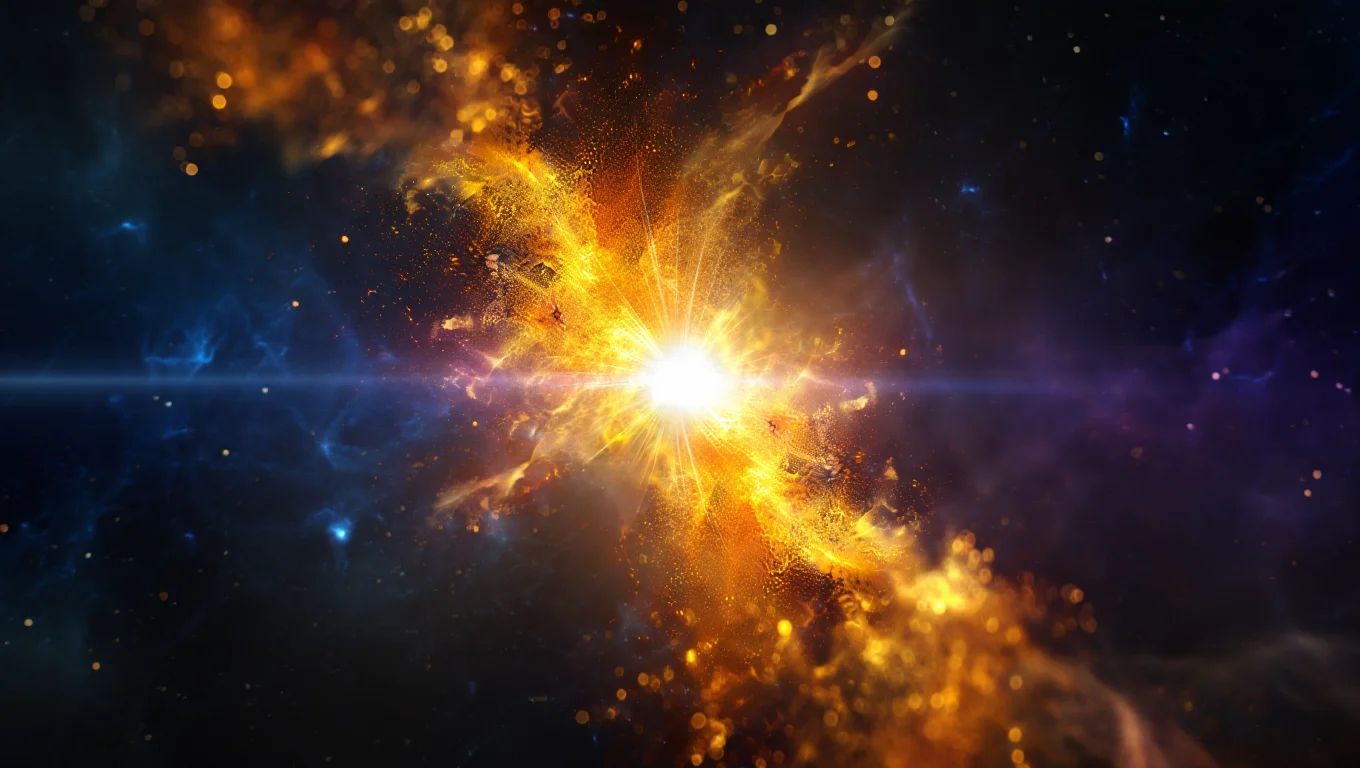This stellar eruption created a phenomenal amount of gold and platinum 💥
Follow us on Google News (click on ☆)

Researchers have demonstrated that this extreme event, brighter than anything previously observed in the Milky Way, generated heavy elements through radioactive decay. This discovery challenges our understanding of element formation and suggests that magnetars could play a key role in dispersing these rare materials throughout the Universe.
The lightest elements, such as hydrogen and helium, appeared shortly after the Big Bang. Ordinary stars produce heavier elements like oxygen and iron through nuclear fusion. However, the formation of elements heavier than iron requires much more extreme conditions, which are rarely found in the Universe.
A team from Columbia University, led by Professor Brian Metzger and doctoral student Anirudh Patel, has provided a novel answer. Their study reveals that an eruptive explosion in 2004 likely generated a significant amount of heavy elements. This event released more energy in half a second than the Sun does in 250,000 years.
Magnetars, neutron stars with the strongest magnetic fields in the Universe, are capable of producing extreme eruptions. The 2004 burst from magnetar SGR 1806-20 was so powerful it affected Earth's atmosphere. The INTEGRAL space observatory also detected a prolonged gamma signal, attributed to the decay of newly formed heavy elements.
Researchers estimate that up to 10% of precious metals on Earth could come from magnetars. This discovery, published in The Astrophysical Journal Letters, opens new perspectives on the origin of heavy elements in the Universe.
How do magnetars produce heavy elements?
Magnetars, with their extremely powerful magnetic fields, create unique conditions for heavy element synthesis. During a gamma-ray burst, nuclear reactions in the neutron star's crust can produce elements like gold and platinum.
These elements are then dispersed into space during the explosion, contributing to the galaxy's chemical enrichment. These events, known as the r-process, are essential for understanding the distribution of precious metals in the Universe.
The recent discovery shows that magnetars could be a major source of these elements, rivaling neutron star mergers. This expands our understanding of astrophysical phenomena capable of generating heavy elements.
What is the impact of gamma-ray bursts on Earth?
Gamma-ray bursts, though distant, can have measurable effects on our planet. The 2004 burst disrupted Earth's ionosphere, demonstrating the immense energy released by these events.
These disturbances can affect radio communications and satellite navigation systems. However, the distance of magnetars in our galaxy makes a direct impact on terrestrial life unlikely.
Studying these events also helps better understand potential risks for future space missions. Astronauts could be exposed to high radiation levels during particularly intense gamma-ray bursts.